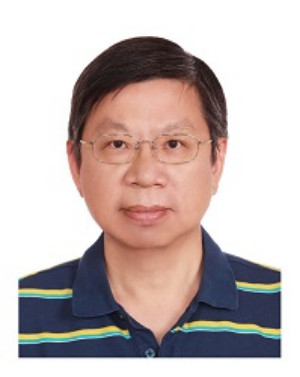Conjugated Polymers 2016
A special issue of Polymers (ISSN 2073-4360).
Deadline for manuscript submissions: closed (30 September 2016) | Viewed by 124365
Special Issue Editors
Interests: polymer synthesis (conjugated polymers and fullerenes); processing and applications of conjugated polymers; polymer nanofibers and colloids; polymer/metal composites; polymeric sensors and actuators; polyeletrolyte (supramolecular) self-assembly
Special Issues, Collections and Topics in MDPI journals
Interests: conjugated polymer applications; electrocatalysis; surface enhanced Raman spectroscopy; nanomaterials synthesis
Special Issues, Collections and Topics in MDPI journals
Interests: conjugated polymer; supramolecular polymer structures; organic photovoltaic; polymer light-emitting diodes
Interests: microwave absorption; carbon-based composites; core-shell configuration; hollow microstructure; anti-corrosion magnetic metals
Special Issues, Collections and Topics in MDPI journals
Special Issue Information
Dear Colleagues,
For the past three decades, conjugated polymers have emerged as one of the most promising polymeric materials for commercial applications due to their tunable structure and properties which can be controlled through organic synthesis and processing methods. New physics and theory evolved from the discovery of these new materials have resulted in understanding of the structure-property relationship that will benefit rational design of new structures with emergent/enhanced properties. In recent years, conjugated polymers have shown promises in transistors, light emitting diodes, solar cells, biosensing, and imaging. Composites of conjugated polymers and metal nanoparticles have led to substrates with highly sensitive surface enhanced Raman scattering responses. There is no doubt that conjugated polymers will continue to find new applications that will be of interest in various research fields.
In this Special Issue, we call for papers concerning with synthesis, theory and application of conjugated polymers, conjugated polymer based nanocomposites and self-assemblies. Of particular interests are new structures and functions resulting from synthesis and processing of conjugated polymers, new insights on structure-property relationship leading to emergent/enhanced functions, and developing greater understanding and control of conjugated polymer photophysics and spectroscopy at various length and temporal scales. The applications are pertaining to, but not limited to conjugated polymer based optical (LED), electronic (transistor), catalysis, sensing, and energy devices.
Dr. Hsing-Lin Wang
Prof. Ping Xu
Prof. Leeyih Wang
Prof. Yunchen Du
Guest Editors
Manuscript Submission Information
Manuscripts should be submitted online at www.mdpi.com by registering and logging in to this website. Once you are registered, click here to go to the submission form. Manuscripts can be submitted until the deadline. All submissions that pass pre-check are peer-reviewed. Accepted papers will be published continuously in the journal (as soon as accepted) and will be listed together on the special issue website. Research articles, review articles as well as short communications are invited. For planned papers, a title and short abstract (about 100 words) can be sent to the Editorial Office for announcement on this website.
Submitted manuscripts should not have been published previously, nor be under consideration for publication elsewhere (except conference proceedings papers). All manuscripts are thoroughly refereed through a single-blind peer-review process. A guide for authors and other relevant information for submission of manuscripts is available on the Instructions for Authors page. Polymers is an international peer-reviewed open access semimonthly journal published by MDPI.
Please visit the Instructions for Authors page before submitting a manuscript. The Article Processing Charge (APC) for publication in this open access journal is 2700 CHF (Swiss Francs). Submitted papers should be well formatted and use good English. Authors may use MDPI's English editing service prior to publication or during author revisions.
Keywords
- synthesis and characterization
- structure-property relationship
- light-emitting diodes
- polymer photovoltaic
- biosensing and imaging
- transistor
- conjugated polymer based nanocomposites and self-assembly
- emergent phenomenon and properties
- photocatalysis and electrocatalysis
- surface enhanced Raman scattering substrate
- fuel cell devices









